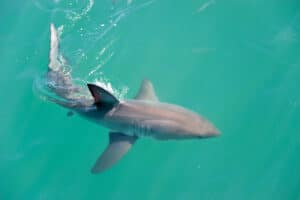There’s a reason why movies like Jaws tell a story about ruthless, blood-thirsty monsters of the ocean. Sharks are living dinosaurs, and technically, they were here before dinosaurs roamed the earth. These fearsome creatures get a bad rap due to their incredible hunting abilities and fearsome appearance.
Great white sharks are the most aggressive and dangerous sharks in the world. And due to their appearance, salmon sharks often get mistaken for great whites. But what sets them apart from each other? Let’s analyze their differences and similarities: salmon shark vs. great white shark. Plus, find out who would win in a fight.
Comparison: Salmon Shark vs. Great White Shark
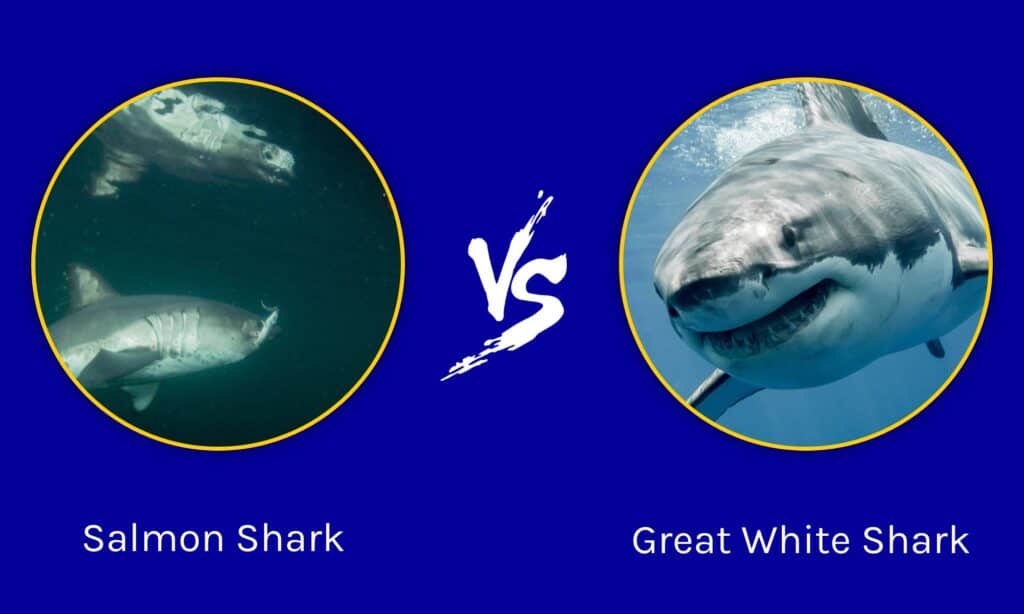
| Characteristics | Salmon Shark | Great White Shark |
|---|---|---|
| Size | 6.6 – 8.6 feet long 485 pounds | 11 – 21 feet long 4,200 – 5,000 pounds (max) |
| Appearance | – Medium grey to black with a white underside and dark splotches -short, compressed body with a short, cone-shaped snout | -Dark blue, grey, or brown with a white underbelly -Large, bulky with a blunt, torpedo-shaped body |
| Behavior | -Stay in groups and are not aggressive towards each other -Very few attacks on humans | -Largely solitary but will travel in pairs occasionally -fierce predators are known for unprovoked human attacks |
| Diet | Salmon, squid, and a variety of fish | Seals, sea lions, dolphins, and marine turtles |
Key Differences Between a Salmon Shark and a Great White Shark
The salmon shark could be considered a cousin to great whites. People mistake the two because they have similar body shapes and coloring. But they actually differ quite a bit.
The key difference between salmon sharks and great whites is that salmon sharks are much smaller than great whites, have a different diet, and tend to be more social than the solitary white shark. Let’s dive into the differences between salmon sharks and great whites.
Size and Appearance Differences

Great whites have a blunt torpedo-shaped body and salmon sharks have short, compressed bodies.
©Ramon Carretero/Shutterstock.com
The salmon shark is a strong swimmer with a broad tail that has a rare double keel and a short ridge that runs along the lower part of the tail. Their skin is typically dark grey with random white markings, and their underbellies are white with darker splotches.
This species can grow to 10 feet long but averages between 6.5 and 8 feet. Larger salmon sharks can weigh more than 660 pounds, but most hover between 400 and 500 pounds. Other characteristics include round dark eyes, long gill slits, short snouts (cone-shaped), and large teeth.
Great whites are the largest predatory fish on the planet and excellent hunters. They have pointed conical snouts, large finds, and a crescent-shaped tail. Their bodies look like blunt torpedoes, and their jaws are filled with sharp, serrated teeth.
Great whites have contrasting colors of dark blue, grey, or brown with a white underbelly. A fully grown white shark doesn’t typically exceed 21 feet in length, and most weigh between 1,500 and 4,000 pounds. However, the largest can weigh over 5,000 pounds.
Salmon Shark Behavior vs. Great White Sharks
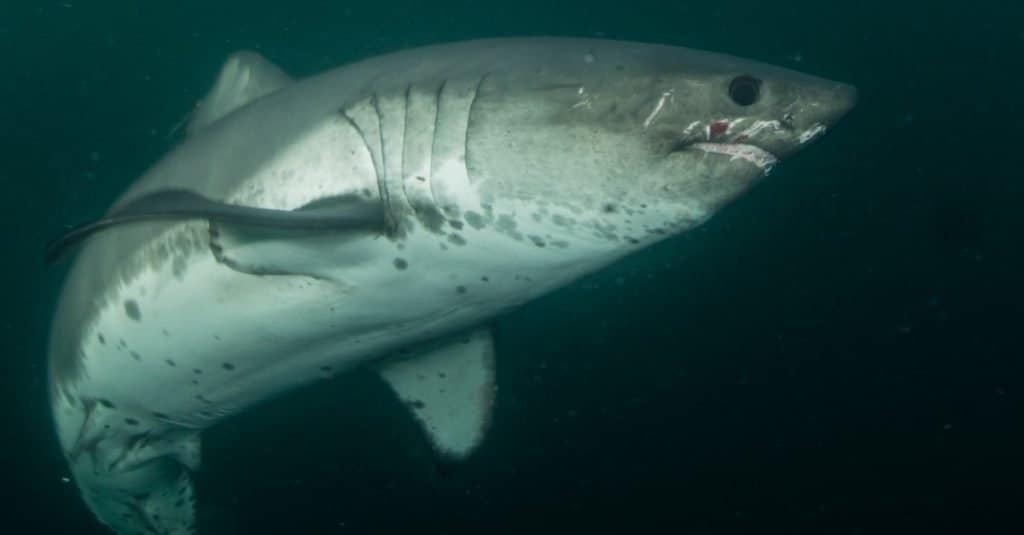
Salmon sharks have never attacked a human. Great whites are responsible for over 300 human attacks.
©Warren Metcalf/Shutterstock.com
Salmon sharks swim in the coastal and oceanic environments of the subarctic and North Pacific Oceans. They prefer temperatures between 36- and 75-degrees Fahrenheit and lurk from the surface to 500 feet. Salmon sharks are endothermic, meaning they regulate their body temperature 20 degrees above the ambient water temperature.
This species is semi-social and will hunt in groups or by themselves. Their groups comprise the same gender and the same average size. They can be aggressive and are potentially dangerous to humans, but they’ve never been identified in an attack.
White sharks are globally distributed, but you can most often find them in South Africa, Australia, North Atlantic, and Northeastern Pacific. These sharks thrive in a water temperature between 54- and 75-degrees Fahrenheit and can dive to a maximum depth of 775 feet. This fierce predator is also endothermic, allowing them to remain swift and agile even in cold water.
Researchers have always seen great whites as largely solitary animals, but new evidence suggests that they are more sociable than previously thought. They will occasionally group into pairs and travel together for long distances, working to catch prey. More frequently, though, they are loners until mating season. Great whites are one of the most aggressive sharks in the ocean and have attacked more than 300 humans; almost 60 were fatal.
Great Whites vs. Salmon Sharks Diet
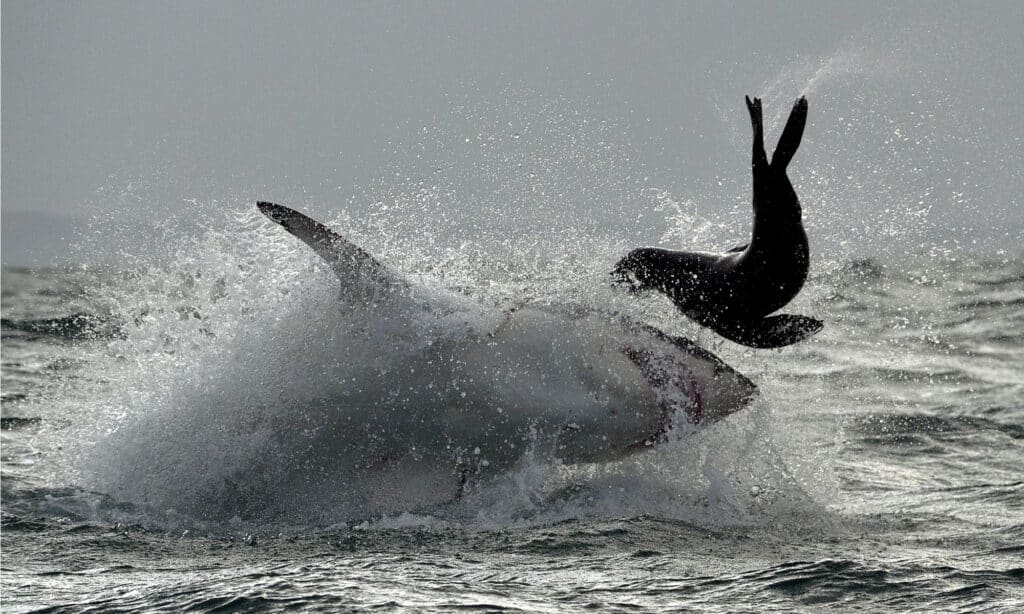
Salmon sharks eat salmon and other fish. Great whites eat marine mammals like seals and sea lions.
©Sergey Uryadnikov/Shutterstock.com
The main diet of a salmon shark consists of salmon (obviously), sablefish, trout, squid, herring, pollock, sardines, and sculpins. While those animals are its food of choice, it will settle for what is in abundance.
Their unique features like broad tails propel them through the water, making them exceptionally fast. They have tiny pores on their snouts that gather signals and help them identify movement nearby, and they have binocular vision to locate food quickly. And finally, its sharp teeth pull bite-size pieces off of its kill.
Great whites are one of the primary predators of marine mammals and eat seals, sea lions, sea turtles, porpoises, dolphins, and small whales. This species is still opportunistic but rarely indulges outside their favorites.
These apex predators are highly skilled, athletic hunters who use their torpedo-like bodies to leap entirely out of the water. They lurk below their prey, waiting for the perfect opportunity to strike. Due to these refined hunting skills, they rarely miss.
Great whites have strong muscles, good eyesight, and a keen sense of smell. Their coloring also allows them to blend in with their environment. The bite force of a great white is more than 18,000 newtons (20 times stronger than a human’s); its bite easily breaks bones and tears flesh.
Who Would Win in a Fight? Salmon Shark vs. Great White Shark
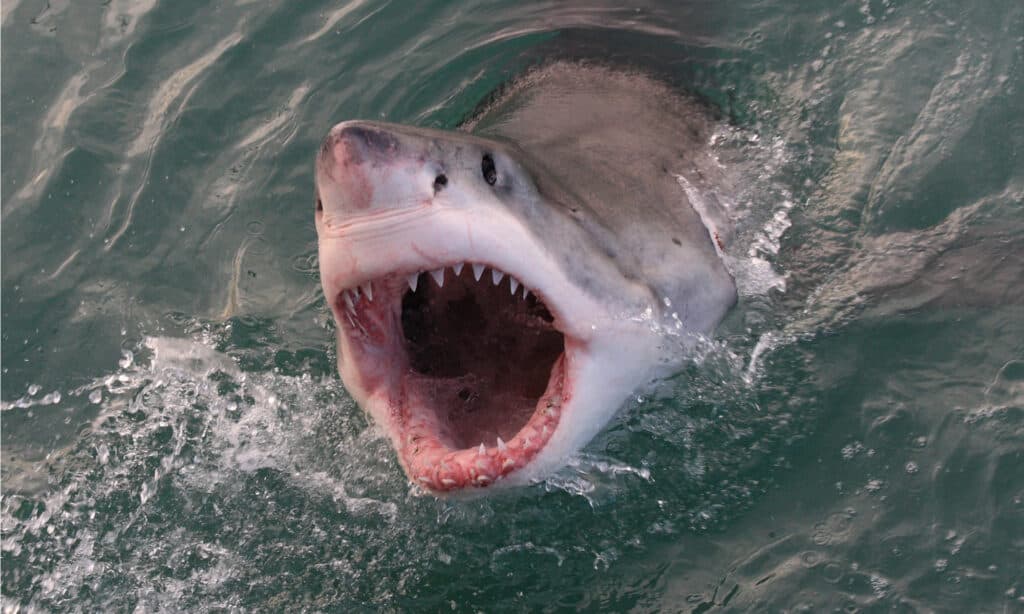
Great white sharks are fearsome hunters and would win in a fight against a salmon shark.
©Alessandro De Maddalena/Shutterstock.com
While salmon sharks may be mistaken for great whites; they are much smaller. These two shark species differ from each other in many ways. Salmon sharks are smaller, more sociable, less aggressive, and feed mainly on small fish. Great whites are enormous, solitary, super aggressive, and prefer marine mammals.
As for which would win in a fight, that title goes to the great white shark, one of the most fearsome creatures in the deep blue sea.
What Animal Could Beat a Great White in Battle?
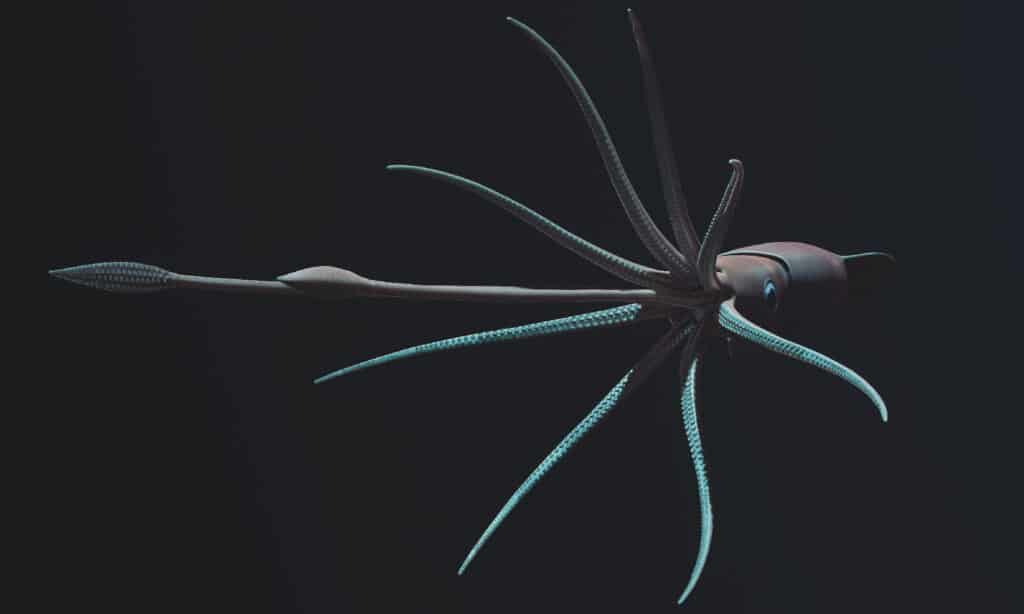
The giant squid is one of the ocean’s least understood predators.
©iStock.com/3dsam79
Great white sharks may be one of the fiercest fish in the ocean, but lurking far below the surface in the darkest depths of the water there are many elusive, massive creatures far from our comprehension. The giant squid is one of the best examples of these mysterious monsters.
Measuring up to 40 feet long, these megalithic squids are more than double the size of an average great white. Using their massive tentacles supplied with super powerful suction cups, a giant squid could easily ensnare a great white and cause the shark to suffocate in a matter of minutes due to the shark’s respiratory system which requires them to constantly swim in order for their gills to filter oxygen properly. After the shark had been subdued, the giant squid would only need to use the incredible crushing force of their beak to finish the job. A great white would stand no chance in a fight with a giant squid.
The photo featured at the top of this post is ©
Thank you for reading! Have some feedback for us? Contact the AZ Animals editorial team.





